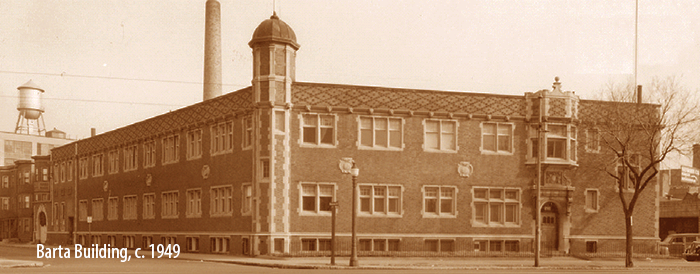
The Most Important Building in the History of Computing
The provenance of everything digital has but one address: 211 Massachusetts Ave., Cambridge, MA.
Digital computing was born there. Behind its walls sat Whirlwind, the world’s first digital oracle.
Measured by the technology pioneered within the confines of its old brick walls, the Barta Building, just like Dr. Who’s TARDIS, is bigger on the inside than it is on the outside. Our digital universe was born there over a remarkably brief period of time: 1948-1953.
Within the Barta Building, occupying some 2500 square feet of floor space, was a monstrous, 9-ton Rube Goldberg-looking machine called the Whirlwind computer (1948-1959). Although the exact eureka moment of Whirlwind’s first digital ping is shrouded in a bit of mystery, by the fall of 1949, it was definitely purring away, solving simple equations in real time and displaying answers on an oscilloscope. It was a first-ever for real-time digital computing. The Barta Building had many more firsts still to come.

If only the Barta Building could speak
Young, unknown, with zero standing in academic circles, Jay Forrester and his engineering team were frequently discredited as brash and wasteful, and driven by crazy ideas that they thought would change the world for the better. Such adversity made them struggle mightily and unnecessarily, but they persevered…and won.
The Barta Building’s band of misfit engineers birthed the digital revolution. They were the first to imagine an electronic landscape of digital computing machines and networks, and the first to blaze its high-tech trails.
Their work in the Barta Building created a profusion of technological firsts that is as yet unmatched in any single engineering project since.
A list of just the top ten inventions witnessed by the Barta Building, from a list that stretches on for dozens more, readily displays the bright boys’ brand of rapid innovation and talent for discovery that now form the bedrock of our digital age:
Information theory
Along the way, they poked a first-ever hole into the Infosphere and put on the first practical application and use of information theory.
Norbert Weiner and Claude Shannon had just given
new, technical meaning to words like communication and message. “They demonstrated that everything from the random motions of subatomic particles to the behavior of electrical switching networks and the intelligibility of human speech is related in a way that can be expressed through certain basic mathematical equations.”

John Harrington (#7 Top 10) first put information theory into practice with the digital transmission of 1s and 0s as radar pictures over voice telephone lines.
Barta Building
Top 10 "Firsts"
#1
World’s first high-speed, real-time, electronic digital computer.
#2
First software: Code warriors, Halcombe Laning and Neal Zierler combined shorthand English and algebraic formulas for the first algebraic compiler.
IBM’s John Backus visited the Barta Building for a demo, then returned to IBM and invented FORTRAN (the first widely used high-level programming language).
#3
Jay Forrester invents magnetic-core memory (RAM): Magnetic-core memory made stable memory and the stored program possible for the first time.
Became the computer industry standard for 20 years, until Intel’s first chip in 1971.
#4
Impatient using punched paper tape, first computer keyboard and monitor installed on Whirlwind.
#5
First computer graphics program: Douglas Ross secretly develops graphics program for Whirlwind, and used his fingertip as a stylus while drawing directly on computer monitor.
Predating Ivan Sutherland’s SketchPad (ancestor of modern computer-aided design) later developed on “transistorized” version of Whirlwind, the TX-2, in 1963.
#6
Bob Everett designs and prototypes first “light gun” in 1950 (precursor to the modern mouse). Touch the light gun to the monitor, and the computer responds.
#7
First digital networking as data is transmitted via microwave from Bedford, MA to Whirlwind in Cambridge, MA (20 miles distant). Proved to be too expensive; opted for telephone lines. Also, first practical application of information theory.
#8
First modem (MOdulator— DEModulator): When AT&T protested that copper-wire telephone lines were unable to transmit data, John Harrington’s team invents the modem.
#9
First computerized air-traffic control: Combined flight radar data and Whirlwind computer to organize and control air traffic.
Became international standard for both military and civilian air transport.
#10
Dudley Buck invents the “cryotron,” superconducting switch, which today is part of superconducting quantum bits (qubits) in quantum computing.

“I was delighted to learn of MIT’s nomination to receive an IEEE Milestone Award for the development of the Whirlwind computer, the first digital computer with a magnetic-core memory that could operate in real, interactive time.”
—Susan Hockfield (2011)
President, MIT 2004-2012
